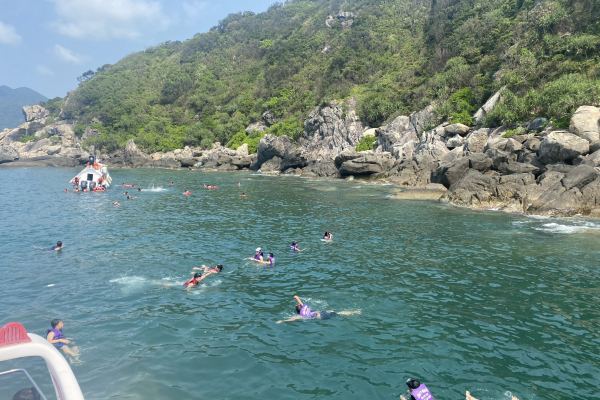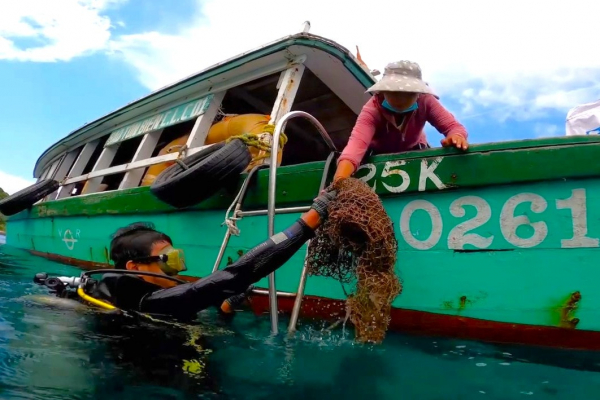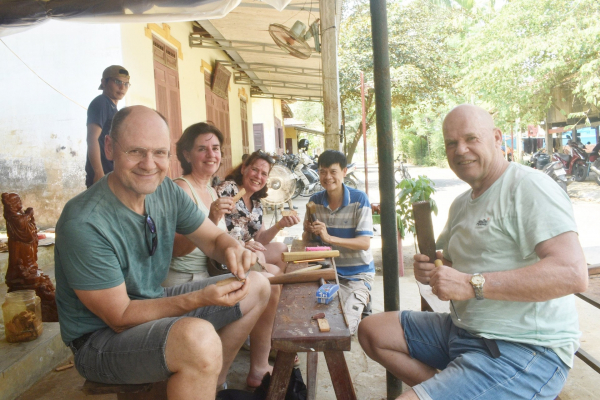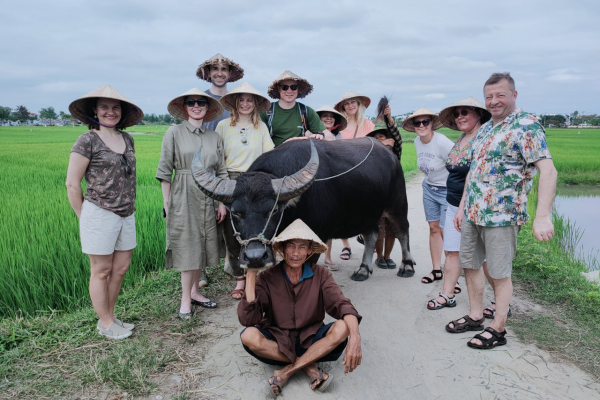As a foreign correspondent for over 30 years, I have reported on Southeast Asia, focusing particularly on the challenges faced by island communities, who serve as stewards of the ocean. These resilient individuals are staring down the dire effects of climate change as ocean warming, severe cyclones, and mass coral reef bleaching jeopardise their livelihoods.
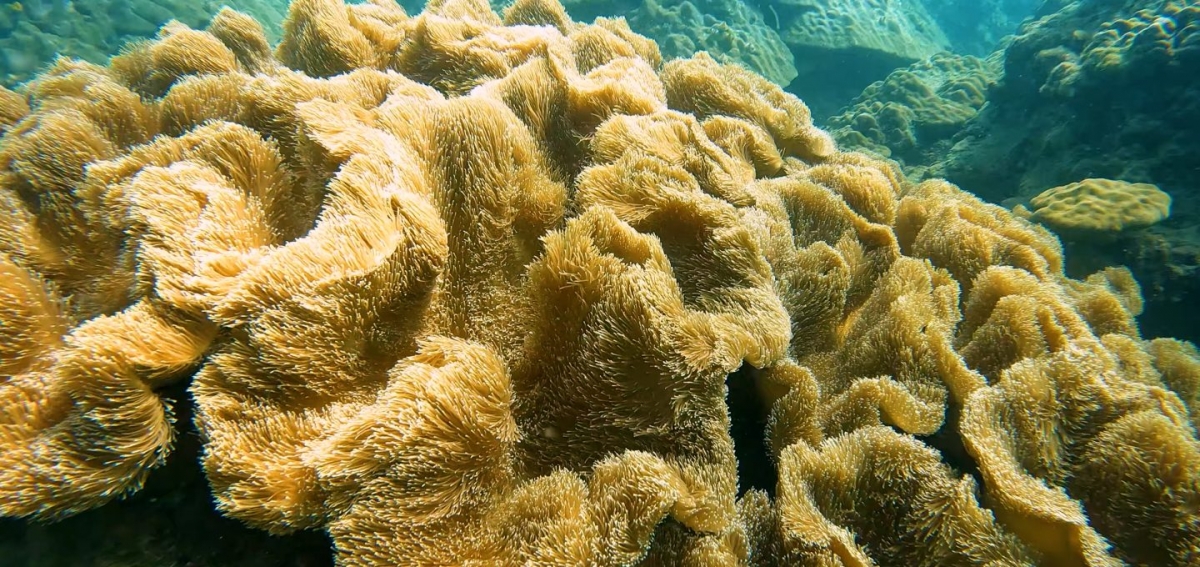
From the enchanting waters of the Philippines, where the sea-faring Badjao people, known as ‘sea nomads’, first taught me how to dive for natural pearls in the Sulu Sea, to the remote Cu Lao Cham archipelago situated 13 nautical miles off Vietnam’s central coast, where local fishermen vividly demonstrated their profound connection to their East Sea, I recognised the urgency to chronicle their stories.
That’s precisely why I eagerly extended an invitation to Dave and Kathy Monk from Brave New Pictures, a talented husband-and-wife documentary film duo from Chicago to join me on Cu Lao Cham. Upon our arrival on the island on a crisp and clear March day, the serene harbour mirrored a radiant blue hue, while a layer of vibrant corals presented us with a dazzling array of colours – blues, pinks, golden-yellows, and greens, creating a mesmerising spectacle.
The harmonious connection of the 2,200 inhabitants of Cu Lao Cham to the East Sea is profound. They depend on it for their livelihoods and the health and abundance of what the waters provide them depend on their care and concern. In this close-knit island community the fishermen and their families share in the harvests of crabs, seaweed, mussels, and snails.
In their small wooden trawlers and traditional round woven basket boats or ‘thung chai’ these cheerful Vietnamese cast their nets and lines for a rich harvest of sea bass, grouper, abalone, lobster, sea cucumber and squid, among other denizens of the deep.
The Cham Islands lie in a marine protected area (MPA) that was established by the Provincial People’s Committee of Quang Nam Province. It’s widely accepted that one of the most powerful and effective methods for protecting fisheries and ocean life is the marine protected area.
.jpg)
“When I first proposed my idea that they needed to stop fishing near the coral reefs, they thought I was crazy,” exclaimed marine biologist, Dr. Chu Manh Trinh, a 61 year-old tireless leader in natural resource management and now retired from the Hoi An Department of Research and International Cooperation.
This ebuillent and engaging marine scientist has played a pivotal role in charting and mobilising community support to safeguard the Cham archipelago’s natural resources, as well as its cultural and historical heritage. Respectfully addressed by locals as ‘thay Trinh’ or “teacher,” he has been instrumental in fostering a sense of responsibility among the island community for the preservation of their environment and cultural legacy.
Trinh informed us that this same harbour used to be a dumping ground for the islanders. But over the years he worked with them to implement a waste disposal and recycling program. The island’s commitment to a sustainable ecological model has garnered it global acclaim, resulting in UNESCO designating it as a World Biosphere Reserve. The energetic teacher expresses quiet pride in the way these locals have embraced a sustainable model for fishing that brought a new economy from ancillary revenue streams created by dive shops, local tour guides, fish sauce and their forest tree products.
 Ảnh: Huỳnh Ngọc Diên
Ảnh: Huỳnh Ngọc Diên
The island’s marine protected area now has over 277 coral species, 250 reef fish and 97 types of mollusks. While not as significant as the marine biodiversity seen in the Great Barrier Reef, it is becoming widely recognised as an excellent eco-tourism model.
THE ISLAND’S MARINE PROTECTED AREA NOW HAS OVER 277 CORAL SPECIES, 250 REEF FISH AND 97 TYPES OF MOLLUSKS.
During the documentary shoot, a wedding reception unfolded right before our homestay. Our gracious island hosts expressed apologies for the lively music, which disrupted what would typically be a tranquil afternoon. While a few glimpses of the reception found their way into the documentary, we also set aside time to conduct interviews with the islanders.
One notable interviewee was the agile 62-year-old Tran Quoc Ngao, widely recognised as the island’s ‘forest man’, who enthusiastically shared insights about the health benefits derived from the natural plants thriving along their island’s hilly terrain. “Our leaves found here in the mountain side are cut into small pieces, dried and made into medicinal tea,” claims Ngao.
Our film team was incredibly fortunate to have the invaluable assistance of ‘Chip’, also known as Cao Nguyen Thao Huyen as our resourceful interpreter. Chip, a 30 year-old female born on the island, possesses a Masters of Environment from the University of Melbourne. Her extensive knowledge about the island community proved invaluable since she was a familiar face among the islanders and their families. As a dedicated staff member of the Marine Protected Area (MPA) Management Board, she played a crucial role in our interviews. Whenever she inquired about the interviewees, they responded with a playful, “Why are you asking me that? You already know the answer!”
Later in the week, aboard a weathered wooden dive boat, Tran Thi Phurong Thao and Nguyen Van Phong, two adventurous young Vietnamese divers from the Hoi An MPA office, guided us in exploring the captivating coral reef formations encircling the island.
Despite the islanders’ efforts to safeguard their coral reefs, they grapple with the unavoidable consequences of climate change, leading to coral bleaching as ocean temperatures soar. Regrettably, warm-water coral reefs have dwindled by at least 50 percent in the last three decades world-wide. Vietnam faces imminent threats from climate change and the rising sea levels.
As we embarked on a community-inspired walkabout during the filming, we encountered an elderly woman diligently crafting hammocks made from the bark of Sycamore trees in the nearby mountains. Trinh emphasised the importance of safeguarding ecosystems, fostering the sharing of natural resources, and diversifying livelihoods to fortify the Cham Island communities. Pausing at the island’s museum, we explored the exhibited village artifacts, gaining insight into the rich heritage of the area.
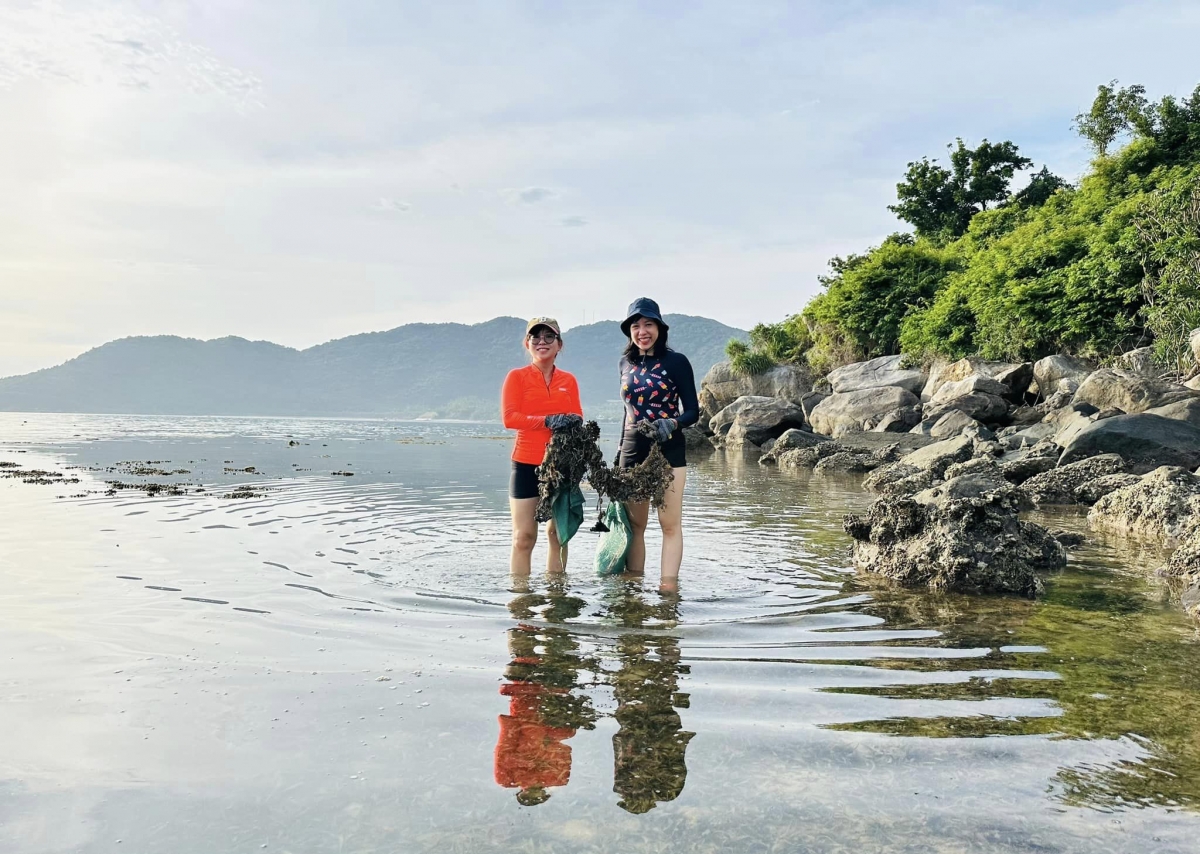 Ảnh: KHu bảo tồn biển Cù Lao Chàm
Ảnh: KHu bảo tồn biển Cù Lao Chàm
DESPITE THE ISLANDERS’ EFFORTS TO SAFEGUARD THEIR CORAL REEFS, THEY GRAPPLE WITH THE UNAVOIDABLE CONSEQUENCES OF CLIMATE CHANGE.
The following day, we met a monk who tends to the sacred Ong Ngu whale museum. Cham beliefs run as deep as the ocean about the mythic properties of whales, which have been protecting these fishermen and their ancestors for many generations.
The locals and other fishermen hold special ceremonies not only for whales, but also for dolphins and porpoises. According to old stories circulated even today among island residents, the whale was considered the embodiment of the god ‘Cha-Aih-Va’, know as the god of waves, who often rescued people in distress at sea. Consequently, the bones of whales are placed in their museum and annually, there’s a two-day Whale Festival for the fishing community that celebrates good weather and safe journeys.
Whether one believes in these tales or not, there appears to be nothing but good fortune for these island fishermen and for us as visitors. It’s hard not to see the benefits of this blue community in the midst of the sea that offers a sanctuary to all.
oceanographicmagazine





 VietNam
VietNam





